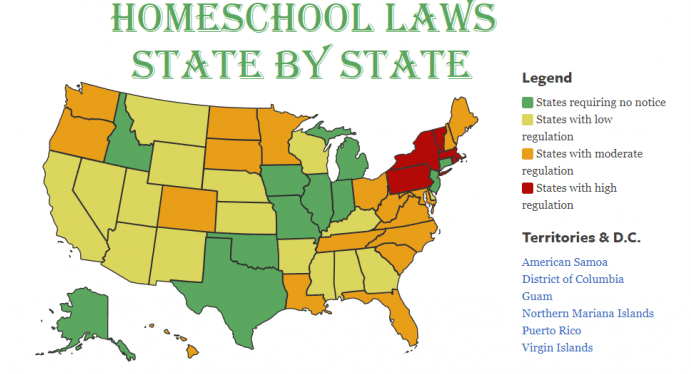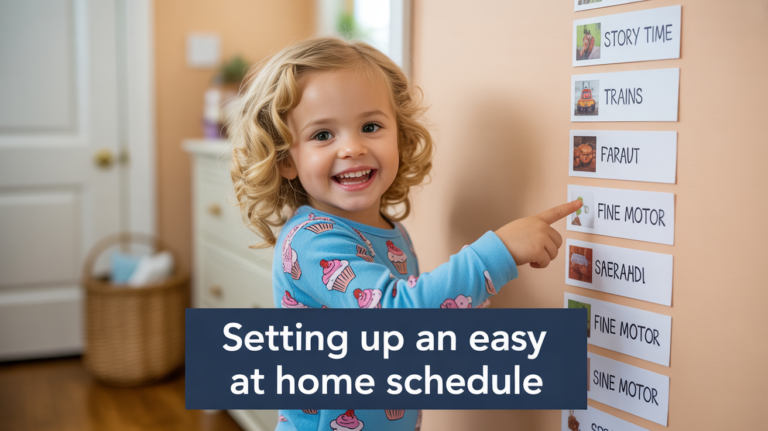How to Start Homeschooling? The 7-Steps Ultimate Guide
The educational landscape is rapidly transforming. In 2021-22, over 3.7 million K-12 students were homeschooled in the U.S., a number that continues to grow as families seek an extraordinary alternative. This surging movement towards homeschooling empowers parents to unlock unparalleled personalized learning and incredible flexibility, fostering a truly parent-led education.
If you’re ready to explore how to start homeschooling, understand nuanced homeschooling laws by state, or choose the best homeschool curriculum, this comprehensive guide is your essential first step. Embark on a rewarding homeschooling journey with confidence, designing an education as unique as your child.
Key Takeaways for Homeschooling Success
- Prioritize State Legal Compliance: Always start by thoroughly understanding and adhering to your specific state’s homeschooling laws and requirements to ensure a smooth, legal journey.
- Embrace Personalized & Flexible Learning: Tailor education to your child’s unique learning style and interests, adapting schedules to create a dynamic and effective home learning environment.
- Follow a Clear Action Plan: Confidently begin by systematically implementing the seven practical steps outlined, from formal withdrawal to curriculum selection and space setup.
- Dismiss Socialization Myths: Homeschooled children typically develop strong social skills through diverse, intentional interactions in co-ops, extracurriculars, and community activities.
- Build Your Support Network: Remember homeschooling is a shared journey; connect with local and online communities for invaluable advice, resources, and encouragement.
Understanding Homeschooling: Defining Your Educational Landscape
Homeschooling, at its core, is the education of children at home, typically by parents or guardians, rather than in a traditional public or private school setting. It is a distinct educational approach that emphasizes parental involvement and often allows for a highly customized learning experience.
It is crucial to distinguish homeschooling from “virtual schooling” or “remote learning” provided by public or private institutions. While both involve learning outside a physical classroom, homeschooling implies a greater degree of autonomy and responsibility for curriculum design, instruction, and record-keeping on the part of the parent.
To navigate the wide array of options and choose the perfect fit for your child, consult our in-depth analysis, Top 10 Best Homeschool Curriculum & How to Choose.
Comparison with Public/Private School
The differences between homeschooling and traditional schooling are fundamental and often drive families to choose the home-based option:
| Aspect | Homeschooling | Public/Private School |
|---|---|---|
| Curriculum Design and Control | Parents design and control the curriculum, allowing customization to the child’s needs, interests, and pace. | Standardized curriculum decided by state or institution with limited flexibility. |
| Schedule Flexibility and Pacing | Highly flexible schedule tailored to family lifestyle, travel, or peak learning times. | Fixed school hours and yearly calendars with little adaptability. |
| Learning Environment | Familiar, comfortable, and personalized setting with fewer distractions and stronger parent-child bond. | Classroom setting with potential for distractions and varied student-teacher dynamics. |
| Individualized Plans & Parental Involvement | Instruction is instantly adjustable based on progress; parents are directly involved daily. | IEPs possible but often limited; parental involvement varies and is typically outside school hours. |
Core Philosophies Driving Homeschooling
Underlying the decision to homeschool are often specific educational philosophies that guide families in their approach:
- Child-led Learning: Many homeschooling philosophies prioritize following a child’s natural curiosity and interests, believing that learning is most effective when it is self-motivated.
- Flexible Education: Homeschooling allows education to adapt to life’s rhythms, integrating learning into daily activities, travel, and real-world experiences.
- Parent-directed Instruction: Parents take an active role in guiding their child’s education, acting as facilitators, mentors, and instructors.
- Nurturing and Stimulating Environment: The home provides a safe and supportive space where children can explore, experiment, and learn without the pressures of a traditional classroom.
- Lifelong Love of Learning: A primary goal for many homeschooling families is to instill a deep, intrinsic motivation for learning that extends beyond formal education.
Major Homeschooling Methods/Styles: A Detailed Overview
One of the strengths of homeschooling is the diversity of approaches available. Parents can choose a method that best aligns with their family’s values and their child’s learning style:
Pros and Cons of Homeschooling
- Customized and Personalized Learning: Tailor the curriculum to your child’s pace, learning style, and interests for deeper engagement and mastery.
- Flexible Schedules and Lifestyle Integration: Learn anytime, anywhere — during travel, errands, or hobbies — allowing education to align with family rhythm.
- Deeper Family Bonds and Connections: Daily shared learning strengthens parent-child relationships and builds mutual respect through discovery.
- Values and Worldview Integration: Embed moral, spiritual, or ethical beliefs into academic instruction for a cohesive developmental environment.
- Significant Time Commitment: Requires a dedicated parental role daily, impacting work-life balance.
- Financial Implications: Potential loss of income if a parent stays home, plus costs for curriculum, materials, and activities.
- Potential for Parental Stress and Burnout: Balancing educator, parent, and homemaker roles can lead to overwhelm without proper support.
- Initial Social Development Concerns: Worries about socialization are common, though largely unfounded with the right community resources.
To navigate the wide array of options and choose the perfect fit for your child, consult our in-depth analysis, Top 10 Best Homeschool Curriculum & How to Choose.
Requirements for Homeschooling in Different States: Your Legal Compass

Crucial Disclaimer & Immediate Call to Action: Homeschooling laws vary widely by state and are subject to change. It is absolutely crucial that you research and comply with the specific regulations for your state and locality before you begin homeschooling.
For the most accurate and up-to-date legal guidance, we strongly advise consulting the Homeschool Legal Defense Association (HSLDA) website. Additionally, always check your specific state department of education website. This guide provides general information and is not legal advice.
Navigating the legal landscape of homeschooling is often one of the most intimidating initial hurdles for prospective homeschoolers. Understanding why homeschooling laws by state differ significantly and stressing the paramount importance of strict compliance is essential for a smooth and legal homeschooling journey.
If you’re ready to explore how to start homeschooling, understand nuanced homeschooling laws by state, or choose the best homeschool curriculum, this comprehensive guide about Homeschooling Laws by State is your essential first step.
State-Based Classification Overview
To help you quickly understand the general regulatory environment, states can be broadly categorized based on their approach to homeschooling regulations:
- Low Regulation States (“No Notice Required”): In these states, there is typically no obligation to notify school officials or the state of your intent to homeschool. Examples often include Texas, Idaho, and Michigan.
- Moderate Regulation States (“Notice of Intent + Record Keeping”): These states commonly require parents to submit a formal “notice of intent to homeschool” letter to the local school district or state. They may also require maintaining attendance records and keeping curriculum logs or portfolios. Examples include Florida, Virginia, and North Carolina.
- High Regulation States (“Standardized Testing or Evaluation”): States with more stringent requirements may mandate annual standardized testing, professional evaluations by certified teachers, or specific curriculum approval processes. Examples include New York, Pennsylvania, and Massachusetts.
Basic Legal Requirements Defined (Common Elements)
While specific requirements vary, several common legal elements are often encountered across different states:
- Compulsory Education Laws: Homeschooling operates within the framework of state compulsory education laws, which mandate school attendance for children within certain age ranges. Homeschooling is recognized as a valid alternative to traditional schooling.
- Age Requirements: States specify the age ranges during which compulsory education applies, which directly impacts when a child must begin and end their homeschooling journey.
- Minimum Number of Hours or Days: Many states require a specific number of instructional hours or days per academic year to ensure adequate learning time.
- Mandatory Subject Coverage: Some states mandate that specific subjects, such as reading, math, science, history, and civics, must be taught as part of the homeschooling curriculum.
- Attendance/Record Keeping: The importance of accurate documentation cannot be overstated. This may include daily logs, lesson plans, work samples, and portfolios to demonstrate educational progress.
- Evaluation/Reporting: Depending on the state, annual assessments, portfolio reviews by a certified teacher, or parent-submitted progress reports may be required to evaluate a child’s academic advancement.
- Teacher Qualifications (for parents): In most states, parents are not required to have specific educational degrees or teaching certifications to homeschool their children. However, it is crucial to verify this for your specific state.
For a comprehensive, easy-to-understand breakdown of legal requirements across all states, please refer to our in-depth guide: Homeschooling Laws by State: Made Simple & Clear.
How to Start Homeschooling? Your Seven-Step Action Plan
This section represents the core macro-context element of your pillar content, directly addressing the primary query “how to start homeschooling.” It takes the often overwhelming process of starting homeschooling and breaks it down into a manageable, step-by-step roadmap.
Each step offers concise, practical guidance within the pillar, while strategically including calls-to-action to explore deeper “spoke” content for those ready for more comprehensive detail.
Advise them to re-check regulations annually as laws can change. This ensures you know how to start homeschooling legally and maintain compliance.
For a high-level overview, refer back to Section II: Requirements for Homeschooling in Different States. For precise legal guidance specific to your location, please consult our detailed breakdown of Homeschooling Laws by State: A Detailed Breakdown.
Explain the necessity of providing formal written notification to the child’s school district or private school. Advise parents to retain copies of all correspondence and to specifically check their state’s laws (from Step 1) for precise withdrawal requirements, timelines, and forms. Mention obtaining academic records for their child.
Briefly remind readers of the diverse homeschooling methods introduced in Section I (e.g., Classical, Charlotte Mason, Unschooling, Eclectic, Unit Studies, Montessori). Advise them to consider what approach best resonates with their family’s values and their child’s personality.
To deep dive into the various pedagogical approaches, explore our detailed guide on Choosing Your Homeschooling Style: A Deep Dive Into Popular Methods.
Prepackaged/All-in-one curriculum kits: Explain their ease of use for beginners. Reputable entities include Time4Learning, Oak Meadow, The Good and the Beautiful, Abeka, and Sonlight.
DIY/Eclectic approach: Curating resources from various sources (e.g., library books, online tutorials, educational games).
Online homeschooling platforms: Examples include Khan Academy, specialized online schools, or virtual academies.
Budget-friendly curriculum options: Utilizing public library resources, open-source materials, and free online resources.
For detailed reviews and recommendations, consult our Best Homeschool Curriculum: Reviews and Recommendations.
Block scheduling: Focus on a few subjects for longer periods.
Loop schedule: Rotating subjects or activities.
Provide a sample weekly plan for beginners (e.g., brief bullet points showing a mix of academic, physical, and interest-led activities). Stress the importance of incorporating regular breaks, outdoor time, and extracurricular into the homeschool daily schedule.
Learn to manage your day effectively with our detailed article on Designing a Homeschooling Schedule: Tips & Templates for Every Family.
• Designing a comfortable and organized learning space (e.g., a quiet corner, a dedicated desk, or utilizing various areas of the home).
• Gathering essential homeschool equipment and supplies (e.g., books, art supplies, basic science kits, manipulatives, a good internet connection).
• Implementing budget-friendly hacks for materials, such as utilizing libraries, thrift stores, and free online resources.
• Homeschool co-ops: Group classes, field trips, shared teaching responsibilities.
• Online groups and forums: Examples include Homeschool Buyers Co-op or large Facebook groups.
• Local support groups and regular meetups: Great for emotional and logistical support.
Discuss how these opportunities provide rich socialization opportunities for children and peer support for parents.
To navigate the wide array of options and choose the perfect fit for your child, consult our in-depth analysis, Top 10 Best Homeschool Curriculum & How to Choose.
What Does a Typical Day of Homeschooling Look Like? Demystifying the Routine
Many new homeschoolers carry a preconceived notion of homeschooling as replicating a traditional school day at home, or conversely, fear a complete lack of structure.
Debunking Stereotypes: There’s No “One Size Fits All” Day
Start by explicitly stating that a “typical day” is incredibly varied and customized. Emphasize that homeschooling rarely looks exactly like traditional school hours, highlighting the inherent flexibility as a primary advantage.
The beauty of homeschooling lies in its adaptability to your family’s unique rhythm and your child’s individual learning pace. This means that a homeschool day can be vastly different from one family to another, and even from one day to the next within the same family.
Importance of Routine vs. Rigidity
While flexibility is a hallmark, establishing a consistent rhythm or homeschool routine for beginners provides predictability, reduces decision fatigue, and ensures academic progress. Stress that it’s a guide, not a strict timetable.
A well-designed routine offers a sense of security and helps children understand expectations, while still allowing for spontaneous learning opportunities and adjustments as needed. It’s about creating a flow that supports learning, rather than adhering to a rigid, unyielding schedule.
Sample Daily/Weekly Homeschooling Schedules
To illustrate the diversity, here are brief examples of how a day or week might be structured for different age groups:
For a Young Child (Ages 5–8)
Emphasize shorter learning blocks (e.g., 20–30 minutes per subject), ample play, sensory activities, integrating “morning baskets” (a common homeschool practice), and frequent breaks.
A typical morning might involve a morning basket with read-alouds and gentle lessons, followed by free play, outdoor time, and perhaps a short math or language arts activity before lunch.
Afternoons could be dedicated to creative projects, field trips, or community activities.
For a Teen (Ages 13–16)
Illustrate longer, more focused study blocks, independent work periods, project-based learning, and integration with part-time jobs or extracurriculars.
A teen’s day might involve independent study of core subjects in the morning, followed by a hands-on science experiment, a visit to a museum, or participation in a debate club in the afternoon.
Flexibility allows for deeper dives into passion projects or vocational training.
Beyond academics, nurturing emotional growth and understanding toddler behavior are integral parts of early childhood development, which homeschooling provides ample opportunity for. For an empowering guide on these crucial developmental stages, read: ‘Empowering Guide to Toddler Behavior and Emotional Growth.
Incorporating Diverse Activities into the Day
Homeschooling allows for a rich tapestry of learning experiences. You can weave in:
- Regular breaks: Essential for focus and preventing burnout, both for the child and the parent.
- Household chores: Integrating life skills into the day, teaching responsibility and practical knowledge. Developing practical skills like managing finances is also a crucial aspect of a child’s education. For an ultimate guide on fostering financial responsibility, see How to Raise a Financially Responsible Child.
- Field trips and experiential learning: Museums, nature walks, historical sites, community events, and even grocery shopping can become valuable learning opportunities.
- Interest-led activities and passion projects: Allowing deep dives into a child’s curiosities, fostering intrinsic motivation and a love for learning.
- Dedicated reading time: Read-aloud for younger children, independent reading for all ages, fostering literacy and imagination.
- Community activities: Participation in homeschool co-ops, sports leagues, art classes, music lessons, and youth groups provides crucial social interaction and skill development.
Homeschooling and Working from Home Parents
For working parents, homeschooling presents unique challenges, but it is absolutely manageable with careful planning. Strategies include utilizing online programs for independent study, splitting teaching duties with a partner, or scheduling lessons during non-work hours.
Many working parents find success by front-loading academic work on weekends or evenings, or by leveraging the flexibility of homeschooling to integrate learning throughout the day in shorter bursts. This often sets up a need for a more detailed discussion on “homeschooling for working parents.”
Balance of Structured vs. Freeform Learning
The unique freedom homeschooling offers is the ability to balance formal, academic lessons with child-led exploration, self-directed learning, and creative projects.
This blend ensures that children not only master core subjects but also develop critical thinking skills, problem-solving abilities, and a genuine passion for discovery.
FAQs
While its legality isn’t questioned, your full compliance with your state’s particular rules is paramount. Always consult the Homeschool Legal Defense Association (HSLDA) for precise, up-to-date legal guidance.
Conclusion
Homeschooling is a unique and profoundly rewarding journey for both parents and children. It is an evolving process, not a rigid, one-time setup, and it offers an unparalleled opportunity for personalized education and deep family connection. Embrace the learning and growth that will occur for your entire family. Remember, every family’s path is unique, and you are capable of finding success in this endeavor.
Throughout this comprehensive guide, we have explored the foundational knowledge necessary for how to start homeschooling. We emphasized the critical importance of understanding homeschooling laws by state, the diversity and flexibility in choosing a suitable homeschool curriculum, and the benefits of establishing a flexible homeschooling schedule for beginners. You now have the foundational knowledge to confidently embark on your homeschooling adventure.
References
- [1] National Home Education Research Institute (NHERI). (2025, January 27). Fast Facts on Homeschooling. Retrieved from https://nheri.org/research-facts-on-homeschooling/
- [2] Brighterly. (2025, May 22). Homeschooling Statistics 2025 in USA. Retrieved from https://brighterly.com/blog/homeschooling-statistics/
- [3] Crown Counseling. (2024, September 18). Public School vs. Homeschool Statistics: A Comprehensive Analysis. Retrieved from https://crowncounseling.com/statistics/public-school-vs-homeschool/
- [4] Homeschool Legal Defense Association (HSLDA). Official Website. Retrieved from https://hslda.org/
- [5] National Home Education Research Institute (NHERI). Research Facts on Homeschooling. Retrieved from https://nheri.org/research-facts-on-homeschooling/ (Note: This is a general link to NHERI’s research facts page, which includes information on social development.)
- [6] National Home Education Research Institute (NHERI). Academic Achievement of Homeschool Students: A Review of Peer-Reviewed Research. Retrieved from https://nheri.org/academic-achievement-homeschool-students/





3 Comments